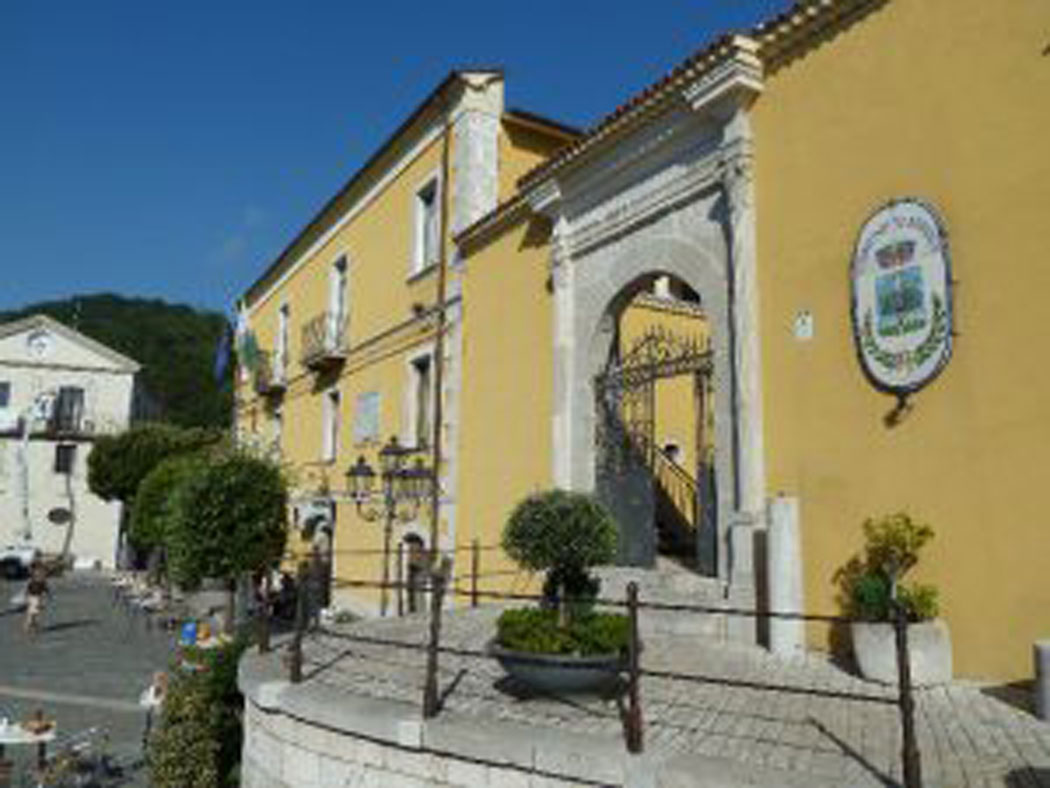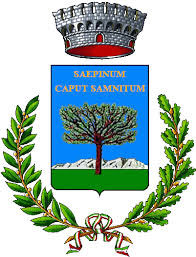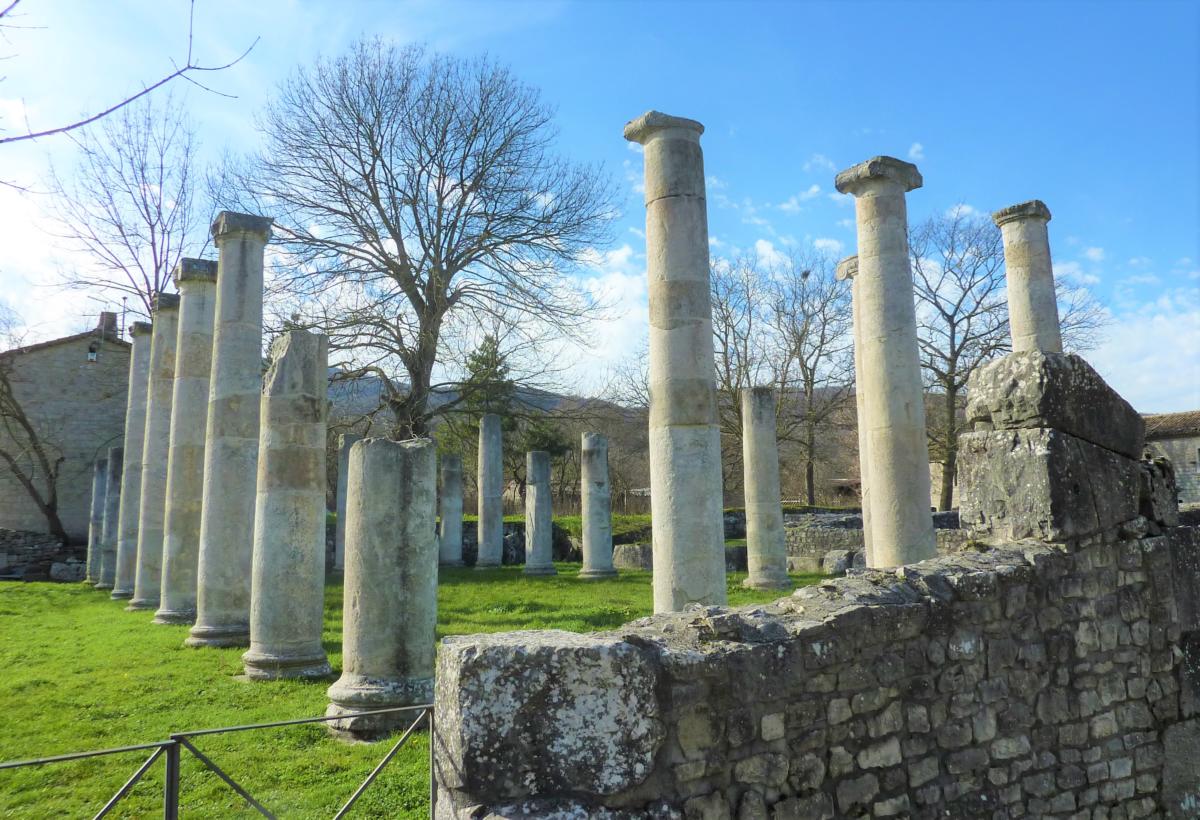

The name Saepinum derives from saeptum (enclosure) and defines the ancient origin of the village. The first activities date back to the VI-V sec. B.C. by the Samnites of the Pentri tribe, who had come from Sabina according to the custom of the "sacred spring".
After each war or famine, the Sabines consecrated the children born in that year to the god Mars with the promise that, upon reaching the age of majority, they would leave in search of new lands led by a bull. When the animal stopped, they would settle there.
The Samnite shepherds, who arrived in the valley, built a "fence", a wooden palisade to fence the village, the enclosure.
With the beginning of the Samnite Wars with Rome, the inhabitants moved further upstream, transforming the village into the stronghold of Terravecchia, a city defined as strong and powerful by the Roman historian Tito Livio. The city had a wide trapezoidal wall perimeter and three gates: the most important, the Postierla del Matese, is still visible and is one of the best preserved archaeological finds of the Samnite building technique for military purposes.
On a hill overlooking the sheep path, it is possible to recognize an ancient Samnite temple which later in the Middle Ages became a church dedicated to Saint Peter.
In 293 BC, during the Third Samnite War, Terravecchia pushed back the Romans led by the consul Papirio Cursore but, after a hard battle in which 7,400 Samnites lost their lives and 3,000 were taken prisoners, the city was conquered.
The Romans rebuilt the city further downstream, near the communication routes of the Via Minucia and the large sheep track that connects Pescasseroli to Candela, the third most important in southern Italy. In 91-88 BC Silla finally extinguished the resistance of the Samnites, imposing Roman citizenship on the inhabitants of Saepinum and enrolling them in the Voltinii tribe.
The urban centre was surrounded by walls, towers and gates and during the Roman period Sepinum (Sepino) became a thriving town thanks to the hard work of its inhabitants and the wealthy families who lived there. We remember the figure of Nerazio Prisco, a jurisconsult chosen by the emperor Trajan as his successor.
The archaeological area of Saepinum testifies to the wealth of the city which had a well-preserved theatre that hosted up to 1,000 people, the forum overlooked by the most important public buildings in the city, the basilica and the spa.
The walls had 25 circular and two octagonal towers and 4 access doors. Porta Bojano is certainly the most interesting of these, still decorated with reliefs of absolute beauty and speciality.
In the fourth century, after the fall of the Western Roman Empire, Sepino was invaded by the Goths and then by Byzantium and suffered serious damage and the population moved up to a hill. It was then conquered by the Lombards and became part of the Duchy of Benevento and in 667 the dukes of Benevento ceded the plain to a colony of Bulgari.
In the meantime, the Benedictine monks built their monastery at the Santa Crocella pass and guarded agricultural knowledge and traditions. In addition, the church had opened its bishop's seat which was soon closed.
In 882, during the invasions of the Saracens, the ancient Roman city was totally ruined and the plain had become a swamp from the waters of the Tammaro river so much so that the Arabs gave it the name of Altilia, or city in ruins.
In the Middle Ages, therefore, the current village was built around a castle and with its walls that can still be partially recognized among the houses.
In 1045, the Norman leader Rodolfo De Molisio or Molise, the comrade-in-arms of Roberto il Guiscardo, arrived with the Altavillas in Southern Italy and occupied the county of Bojano, of which Sepino was part, with his army. Rodolfo became the first count of Bojano in 1053 and Sepino became a barony.
In 1099 the relics of Santa Cristina were brought to the town and this event is still celebrated every January.
In 1740, a nephew of Francesco Carafa brought the barony as a dowry to the Della Leonessa family, an Italian and French noble family of Goth origin.
In 1805 an earthquake destroyed part of the inhabited centre, damaged many churches and the castle which was demolished.
After the unification of Italy, Sepino had a period with bandits and many residents began to leave the country in search of fortune especially in America.
It is interesting to tell an anecdote from the 1950s. During an investigation into the living conditions of southern Italy, exceptional shots were taken at Terravecchia, where the shepherds still lived in the perfectly preserved Roman village and the flocks of the migrating shepherds still crossed the decumano on the main street. The site was then restored in the late twentieth century.
In the thirteenth century the plains area was reclaimed and agricultural and vine cultivation resumed.
In 1566, Scipione Carafa bought the barony of Sepino from Count Giovanni di Altavilla.
In the Renaissance, Sepino was a very flourishing and developed town, as evidenced by the culture of the feudal lords, of which the Palazzo Attilio is an example, built by a clergyman from Sepino after his appointment as bishop of Termoli.
The presence of sheep paths on which shepherds and traders have walked for centuries as well as the fertility of the valley have always brought a certain well-being.
In 1740, a nephew of Francesco Carafa brought the barony as a dowry to the Della Leonessa family, an Italian and French noble family of Goth origin.
In 1805 an earthquake destroyed part of the inhabited center, damaged many churches and the castle which was demolished.
After the unification of Italy, Sepino had a period with brigands and many began to leave the country in search of fortune especially in America.
It is interesting to tell an anecdote from the 1950s. During an investigation into the living conditions of southern Italy, exceptional shots were taken at Terravecchia, where the shepherds still lived in the perfectly preserved Roman village and still crossed the decumanus in the main street by the flocks of the transhumant shepherds. The site was then restored in the 90s of the twentieth century.
Cover photo by Comune di Sepino








Follow us